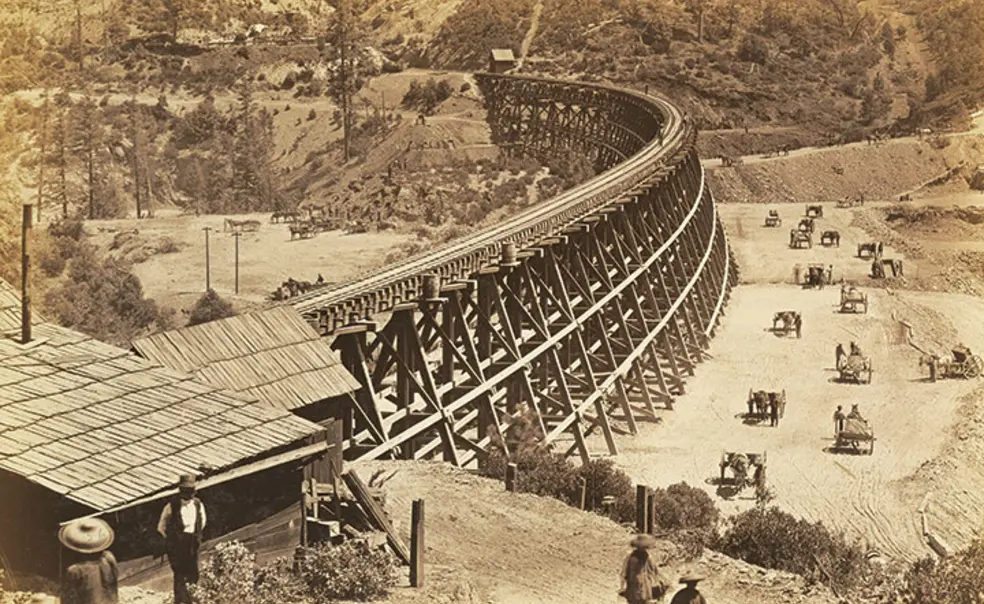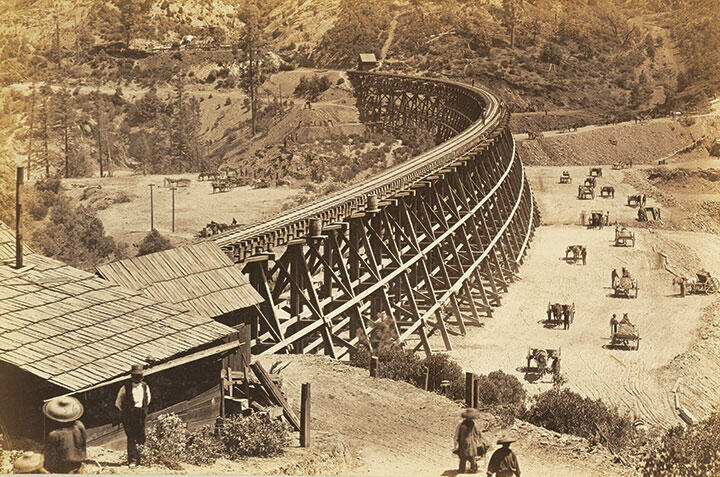Gordon Chang ’70: Building History
Reconstructing the lives of Chinese workers who helped build the Transcontinental Railroad
The completion of the Transcontinental Railroad in 1869 changed America forever. It shrank what had been a three- to six-month journey from one coast to the other to a mere six days. An estimated 10,000 to 15,000 Chinese laborers helped build this feat of engineering, yet their role was unacknowledged for decades, and little is known about their lives.
Three years ago, Stanford professor Gordon Chang ’70 co-founded the Chinese Railroad Workers in North America Project to collect materials related to the daily lives of the workers and “construct a sense of their lived experience. Chinese railroad workers were essential in making [the Transcontinental] happen,” says Chang, a professor of American history and director of Stanford’s Center for East Asian Studies. But “there exists very little information on who the workers were, how they were recruited, how they lived and died on the railroad line, and what happened to them.”
Chang has located payroll records, census rolls, and thousands of photographs and historical documents from archives and libraries around the country. More than two dozen descendants of the workers have shared oral histories. Archaeologists have offered items they stumbled upon while doing unrelated work — such as archaeological digs or site visits for utility companies — which include fragments of celadon teacups, bamboo-patterned rice bowls, and game tiles, all thought to have come from the workers. Chang is publicizing the project in China in hopes of finding material in the voices of railroad workers, such as diaries and letters.
The project will create a digital archive to make many of the materials available to the public. “The rail line was an epic moment in American history,” Chang says, “but the role of Chinese workers in making that happen is very much neglected.”
Chang has located payroll records, census rolls, and thousands of photographs and historical documents from archives and libraries around the country. More than two dozen descendants of the workers have shared oral histories. Archaeologists have offered items they stumbled upon while doing unrelated work — such as archaeological digs or site visits for utility companies — which include fragments of celadon teacups, bamboo-patterned rice bowls, and game tiles, all thought to have come from the workers. Chang is publicizing the project in China in hopes of finding material in the voices of railroad workers, such as diaries and letters.
The project will create a digital archive to make many of the materials available to the public. “The rail line was an epic moment in American history,” Chang says, “but the role of Chinese workers in making that happen is very much neglected.”














No responses yet